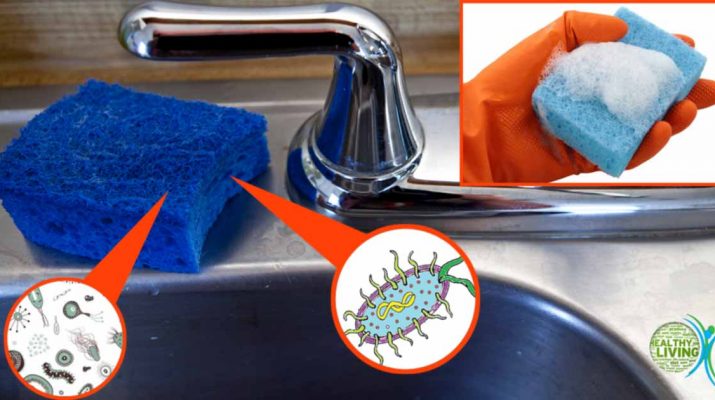More people use the kitchen on a daily basis. That is why there is more contamination in the kitchen than any other area in the house. We wash our hands, dishes and discard some of the food in the sink.
This is how the bacteria gathers around the things we are using every day, along with the sponge. Therefore, it is important to take care of the bacteria before the sponge becomes unbearably smelly. If you want to clean it properly, you can boil or soak it in bleach.
However, you won’t need more than a teaspoon of concentrated bleach in a quart of warm water. But make sure that it isn’t boiling or too hot. Or, better yet, when it gets dirty just throw it away and replace it with a new one.
The Academy of Nutrition and Dietetics even suggest replacing the sponge before it starts to look bad. This way you will be able to avoid the bacteria. Moreover, frequent replacement of the sponge sounds reasonable, but it all depends on how much you use it.
Therefore, if you don’t use it too much, you don’t have to clean it daily. Even if you don’t use it too often, a bad smell is an indicator that you must change it immediately.
Types of Bacteria
Various types of bacteria exist in the sponge. Some might be even connected to campylobacter or salmonella. However, a research found that there is an even more serious contamination in the sponge called opportunistic pathogens.
Even though these diseases are not particularly harmful to healthy people, they could cause infections and even weaken the immune system.
The Number of Microbes in Kitchen Sponges
Sponges are full of microbes, more than you can possibly imagine. As such, it is an ideal living place or a home, for bacteria. It can help them thrive and develop. In a particular research, scientists focused on the metabolic point of view of the bacteria.
It proved quite interesting and resourceful. Scientists concluded that the microbes serve as a threat because they contain good and bad bacteria.
Should You Microwave the Sponge?
Many people recommend microwaving the sponge. It might seem less time-consuming, but it is not as easy as it seems. In addition, make sure you try to remove all the metal in the sponge if you don’t want it to explode.
Besides, you can do this by only washing it a little, according to the web site the Michigan State University. If you want to avoid all of this mess, you can try to boil the sponge. This way you can highly decrease the number of bacteria it contains, and you can use it afterward.
Therefore, if a sponge doesn’t look dirty, it doesn’t mean you should ignore it. On the contrary, you should always pay attention to it if you want to stay away from harmful bacteria.
Key Notes
Sponges are one of the most common tools for cleaning our dishes. Even though we use it to clean, that doesn’t mean that it will always stay clean. If you don’t take care of it, a simple sponge could become a home for various bacteria.
As a result, it is best to replace it frequently or boil it. But, make sure not to use it more than 10 days after you’ve opened it.
Source: NPR | WBUR | Forbes | Discover Magazine

